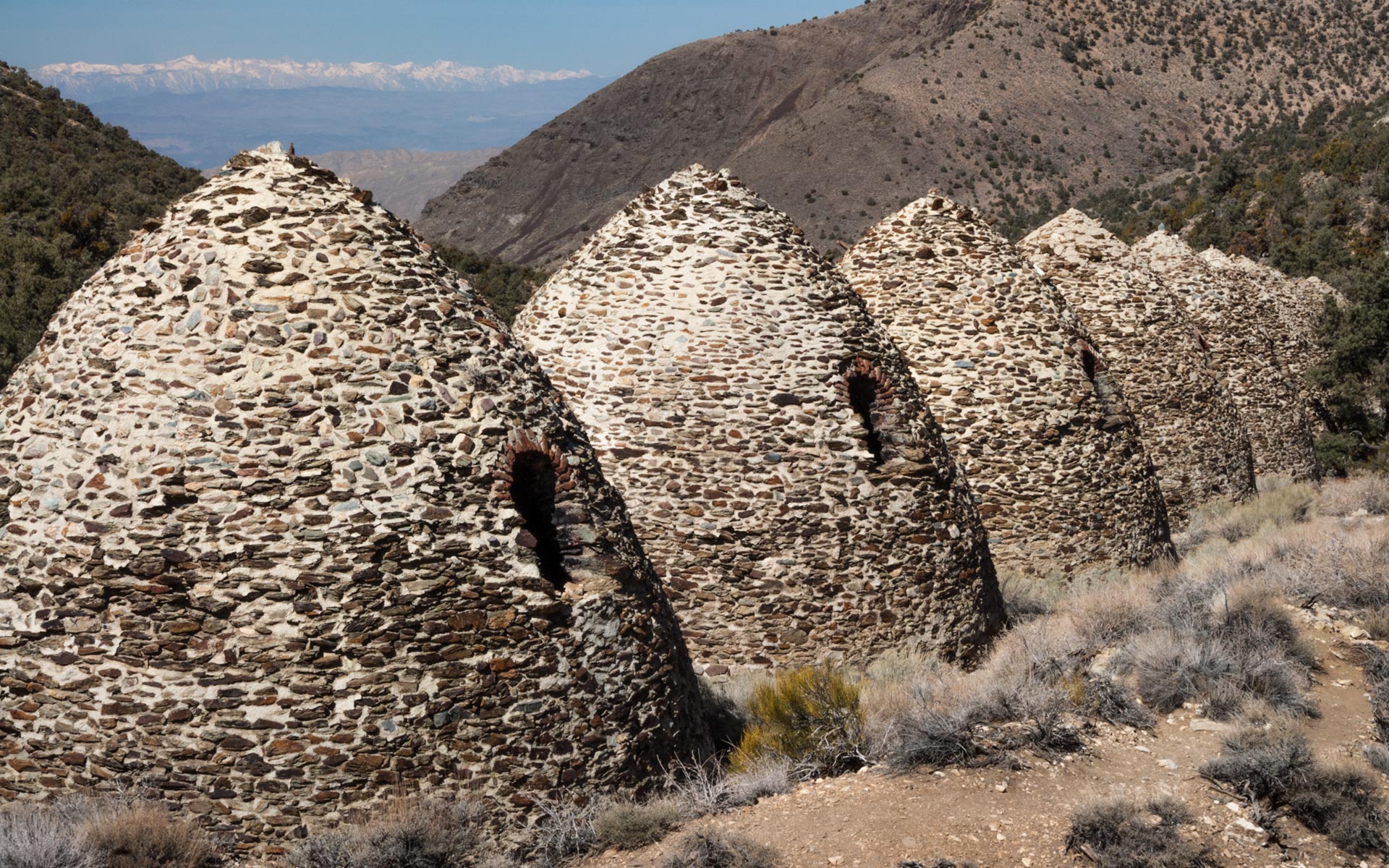
- Destinations
- California
- Death Valley NP
- Charcoal Kilns
Charcoal Kilns
The charcoal kilns in Wildrose Canyon is probably the most remarkable historical-architectural feature of Death Valley National Park. The kilns were completed in 1877 to provide a source of fuel suitable for use at lead-silver mines located in the Argus Range west of Panamint Valley, about 25 miles distant from the kilns.
Getting there:
A trip to the Charcoal Kilns is probably worth it if you are coming into Death Valley from the west or leaving Death Valley heading west. My favorite route to get there is coming on Route 178 passing through Ridgecrest and Trona and over the Wildrose Pass road.
The other option is heading east at the town Olancha located on Hgwy 395. After 45 miles you will reach Sand Dune Junction and turn right. The turnoff to the Charcoal Kilns is about 10 miles beyond the turnoff to Augereberry Point at the Wildrose Ranger Station. The kilns are about seven miles farther. Some of the driving is on a rough dirt road that may be closed in winter due to snow.
Taking shots:
What makes the charcoal kilns an interesting subject is that they look like giant beehives. All ten of them are the same size and shape and they are aligned in a straight row.
Low light conditions (morning and afternoon) is favorable, however the real treat for this location is night photography. Take with you multiple light sources that can be place in the kilns and light spurce for light painting while the shutter is open for a long exposure to take photograph star trails or to capture meteor showers such as the Perseids, Orionids or alike. Have a look at the American Meteor Society to mke the right plans before you hit the road.
I further recommned to take a four mile hike to Wildrose Peak along a saddle with great views down into Death Valley. If you want to take the exploration of the area to a complete new level you should take the 1.8 mile hike to Mahogany Flat and than to Telescope Peak. This is a 14 miles roundtrip and gives fabulous views from the highest point in the national park in all directions. The real bonus for this hike are the very photogenic Bristlecone pines that grow at this high altitude.
Last update: May 1, 2014
